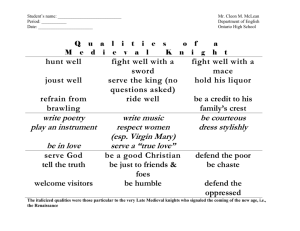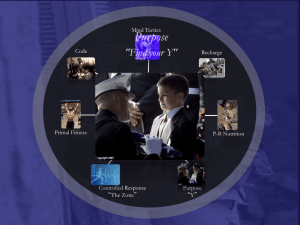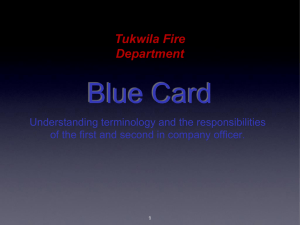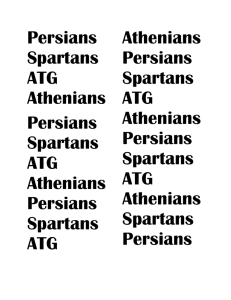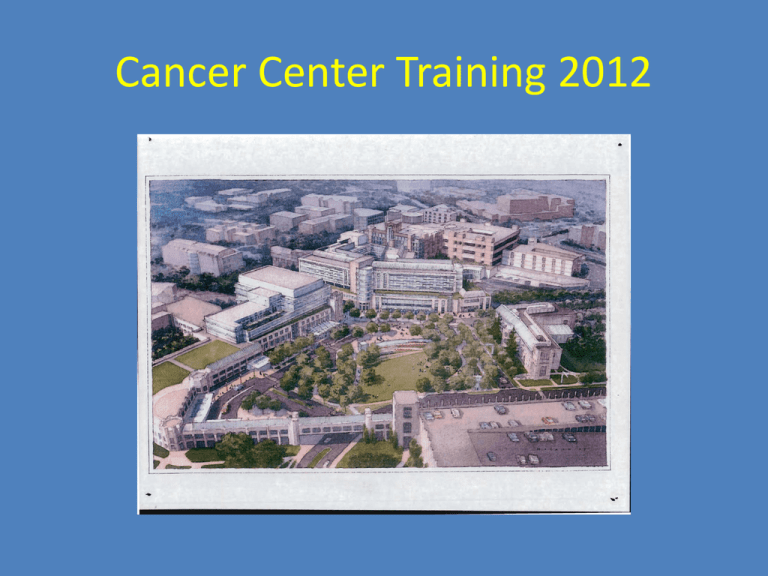
Cancer Center Training 2012
Cancer Center Training 2012
“Defend in Place”
Strategy for Fire Alarm Activations
Cancer Center
Building #7559
Presented By:
Fire & Life Safety Division
Occupational & Environmental Safety Office
Duke University Health System
“Defend In Place” Strategy
What is Defend in Place?
• Defend in Place is an alternative strategy
used to protect patients, staff, and visitors in
the event of a fire or fire alarm in a health
care facility.
“Defend In Place” Strategy
• An alternative to evacuating the building
considers the following:
o Patients undergoing treatments
o Procedures that should not be stopped
o Equipment that is difficult to move
“Defend In Place” Strategy
• It requires a detailed response to a fire
alarm with specific duties outlined for all
staff members.
“Defend In Place” Strategy
• Due to more stringent construction
requirements, fire compartments are used
to “defend” patients in place while a fire
may be occurring in an adjacent
compartment.
“Defend In Place” Strategy
• SPECIFIC PROCEDURES ARE
MANDATORY
• All Code Red voice announcements are
treated as actual fire events
• Standby fire drill reports are
mandatory
Fire Zone Separation – Single Door
Fire Zone Separation – Double Door
“Defend in Place” – Activated Zone(s)
• Fire condition notification will be received via voice
message
• Two alarm voice messages will sound:
– 1st message will annunciate throughout the entire building
– 2nd message will annunciate just in the activated zone(s)
• Strobe devices will flash and accompany voice message
in the activated zone(s) only
Audio for EVAC message
Response in Activated Zone(s)
• Clear the corridors of all equipment
• Prepare to evacuate patients to adjoining
zone(s)
• If visible smoke or fire, begin evacuation
procedures
“Defend In Place” – Adjoining Zone(s)
• Clear the corridors of all equipment
• Prepare to receive patients from adjoining
zone(s)
“Defend In Place” – Standby Zone(s)
• Remain on standby until all clear is given
• Evaluate impact on your zone
• Submit a standby fire drill report
Exit Corridor – Good Practice
Identify Your Zone
• Placards will be posted depicting your level
and zone
• Levels are 00, 0, 1, 2, 3, 4, and 5
• Zones are 1, 2, and 3
Know Your Area!
• Exits . . . . . . . . . . . . . . . . . . . . . Know at least 2
• Pull Stations . . . . . . . . . . . . . By the Exits
• Fire Extinguishers . . . . . . . Locate closest one
• Site Specific Fire Plan . . . . Read it
Manual Pull Station
Fire Alarm Speaker
Concealed Sprinkler Head
Pendent Sprinkler Head
Delayed Egress Exit
Door is locked under
normal conditions.
Press panic bar until
alarm sounds. Door will
unlock within 15 seconds
Upon fire alarm
activation,
door will unlock.
EnGauge Electronic
Fire Extinguisher Monitoring System
Pressure – sensor will report if the unit is
below the acceptable pressure range.
Presence – this indicates that either the unit
is removed for response to a fire or
tampering.
Obstruction – sensor will take samples at
various times and report if the cabinet is
obstructed.
EnGauge Electronic
Fire Extinguisher Monitoring System
Smoke Curtain in Open Position
Smoke Curtain Midway Closing
Smoke Curtain Closed Position
Smoke Curtain Closed Position
Emergency Assembly Points - EAP
• Internal:
Take appropriate action
according to Site Specific Fire Plan (SSFP)
• External:
In the event that evacuation
from the building becomes necessary,
occupants will be directed by emergency
personnel upon exit discharge of the facility
Emergency Assembly Point - EAP
Questions
• A follow up fire drill in your specific area is
forthcoming
• FAQs and answers will be posted at:
Contacting the OESO
Fire & Life Safety Division
• The presentation is available on:
– Facebook
– OESO website
– Education repository link at
construction.dukemedicine.org
• Additional information is contained in the
OESO Online Training: “Fire Safety For Hospital
Workers”

